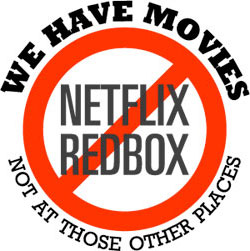VIDEO: How aspect ratio shaped Hollywood
Posted Thursday, June 27, 2013 at 10:31 AM Central
Last updated Thursday, June 27, 2013 at 10:34 AM Central
by John Couture

We've all heard the terms. Full Screen. Widescreen. Pan and Scan. Cinerama. VistaVision. But do we really have any idea what they truly mean?
When I worked at a video store during the mid to late 1990s, Widescreen was just taking off given that DVDs and HDTVs were just over the horizon. The number one question I always got from customers is what was the difference between Full Screen and Widescreen.
I thought I knew the answer, but then I watched this video from FilmmakerIQ.com. Sure, the video is 18 minutes long and you might balk at the length, but I promise you, it truly is fascinating, especially for film buffs and nerds like myself.
If you've ever wondered why or what is 16:9 widescreen and why it matters, then check out this video. After watching it, I really want to get out and see some of the classics from the 1950s and 1960s on the big screen in their native formats.
It also cleared up a major misconception that yes, even I thought was true. I always assumed that film has always been shot in a widescreen aspect ratio and that TV ushered in the era of 4:3. I couldn't have been more wrong.
The Changing Shape of Cinema: The History of Aspect Ratio from FilmmakerIQ.com on Vimeo.





